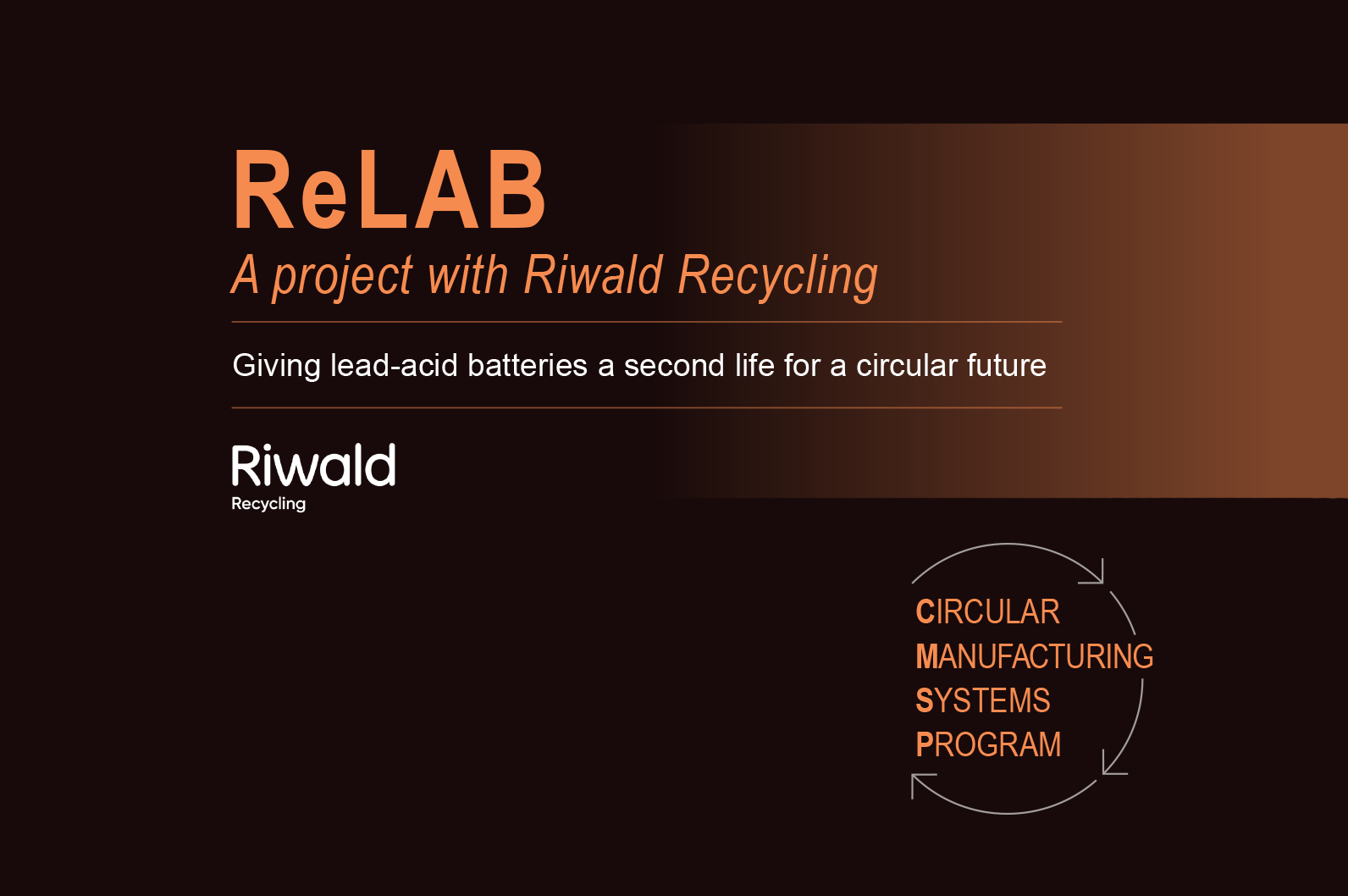
Breathing New Life into Decommissioned Batteries

How ReLAB is Powering a More Sustainable Future
For over 150 years, lead-acid batteries (LABs) have powered everything, from vehicles and telecom systems to backup infrastructure and energy grids. Known for their reliability and affordability, as of 2020, LABs are still responsible for 70% of the energy storage market. But as more advanced technologies like lithium-ion batteries become the norm, millions of LABs are reaching the end of their service life.
Here’s the problem: used LABs contain toxic materials such as lead and sulphuric acid, which pose environmental and health risks if not properly managed. However, many of these batteries still hold usable capacity and could be safely reconditioned rather than discarded. So, instead of throwing them away or recycling them too early, what if we could give them a second life?
That’s where ReLAB project steps in.
Under the Circular Manufacturing Systems Program (CMSP), the ReLAB project which stands for Reconditioning of Decommissioned Lead-Acid Batteries aims to give these batteries a second life.
The project is a collaboration led by FIP-AM@UT researchers and key industry partner Riwald Recycling , and it focuses on repurposing used LABs as low-cost energy storage systems—especially in local and off-grid applications.
The project is a collaboration led by FIP-AM@UT researchers and key industry partner Riwald Recycling , and it focuses on repurposing used LABs as low-cost energy storage systems—especially in local and off-grid applications.
How Does It Work?
ReLAB follows a clear process:
- Develop a state-of-health framework – from product requirements to performance metrics.
- Categorising used battery – testing and assessing the health of used batteries for reconditioning suitability
- Designing system model and design – to effectively integrate reconditioned LABs.
- Build a demonstrator – to validate performance of reconditioned LABs.
Alongside these steps, ReLAB is also producing safety and characterisation guidelines to ensure a reliable and suitable for process for reconditioning.
The potential impact is significant. ReLAB not only aims to reduce hazardous waste and the demand for virgin materials but also contributes directly to the UN Sustainable Development Goals—particularly SDG 7 (Affordable and Clean Energy) and SDG 9 (Industry, Innovation, and Infrastructure). By extending the life of existing battery assets, the project provides affordable energy storage solutions that align with circular economy principles.
At a time when energy demand is rising and resources are under pressure, ReLAB is showing how businesses can be part of the solution. It’s about using what we already have—more wisely and sustainably. It’s not just about prolonging the life of old batteries—it’s about powering a new way forward.

